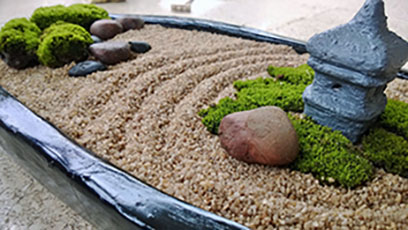New We
by Helen Xia,
CHS Student Writer
When a new year rolls around, it’s a perfect time to set new goals. I’m certainly not the only one who thinks so. We have an entire tradition dedicated to that practice: New Year’s resolutions. Not only do these resolutions give you something to work on for the rest of the year, but they also offer a valuable period for self-reflection. What’s really important to you as an individual?
Although people may choose to keep their yearly aspirations private, it is interesting if you get the chance to read some from those around you. In my case, I distributed quick questionnaires to people attending Catoctin High School’s annual Christmas event, Santa’s Workshop. Santa’s Workshop offers festive activities, such as crafts, free of charge for children to complete. This allowed me to garner a wide range of respondents, from toddlers to guardians and teachers. From these participants, a general trend can be observed: We are all seeking to improve ourselves in some way. Yet, the ways in which different people approach that task are rather diverse. Moreover, I’ve found that New Year’s resolutions often reflect what stage of life we are living. For instance, of the teenagers who submitted their 2023 goals, about half of them wished to either graduate high school, attend college, or take steps toward driving.
I’ve always treated New Year’s resolutions like birthday wishes: Maybe, if I think hard enough, I will wake up with a million dollars at my bedside. Similarly, Jamie, age 42, penned that she would like to “Hit the lotto!!” Eight-year-old George also reported that he would like to “get rich” in 2023, too. I’m glad that brings us all together. May we all obtain our riches this year!
Another trend is evident throughout the resolutions I’ve accumulated: The desire to learn something new. Eleven-year-old Shyloh wrote, “In 2023, I would like to be able to do an aerial.” Comparably, 14-year-old Jared would like to play two songs on the guitar; 15-year-old Doug would like to learn how to play the drums; and 33-year-old Felipe wants to start learning a new language. (Supposedly, six-month-old Cecilia would like to learn how to walk!)
Truly, learning is one of the greatest beauties of living. It’s one of the few constants in life. Amid ever-changing conditions, the opportunity to learn and grow never dissipates.
As one may expect, several goals were career focused. For example, Mr. Felmet of Catoctin High School aims to “put on the best musical CHS has ever seen.” Likewise, 15-year-old Lillian strives to “be the best tennis player.” Sixteen-year-old Colette aspires to “be the best Color Guard member ever.” A handful of younger students want to earn good grades.
Various resolutions, coming from all age groups, are relatable for many. Namely, 14-year-old Griffin would like to “procrastinate less,” and 17-year-old Seth wants to “work out and be happy.” Fifty-six-year-old Trish wishes to “reduce the stress in [her] life!” These goals sound like valid pieces of advice anybody can benefit from. Let’s all procrastinate less, exercise, manage our stress levels, and, above all, be happy this year.
Other responses were more quirky, albeit still relatable for some. Four-year-old Thomas craves more cake in 2023, five-year-old Lucy would like to go on more camping trips, and six-year-old Chandler is seeking to go to Legoland. Additionally, 16-year-old Darrin is aiming to “not be mean.”
My favorite answer that I received came from eight-year-old Avetie, who noted their resolution to be a singular word: “play.”
Why did I include the ages of everybody who submitted a resolution? At the start of this article, I expected to be able to distinguish between age groups by their aspirations alone. During this process, I found that goals from all ages resonated with me, and even resolutions as simple as “play” can be applied to more people than one may think. Sometimes, taking a break from working is as valuable as working itself. We all need time for ourselves to recharge.
While our experiences in life vary immensely, we can all learn from each other. Many times, we learn the same lessons about life, even if said lessons are taught through unlike means. We are more united than we think!


